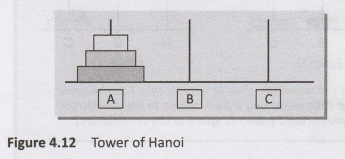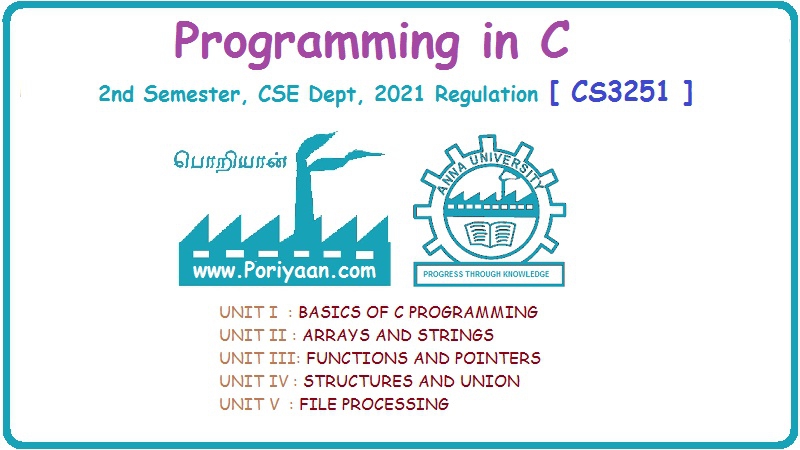Programming in C: Unit III (a): Functions
Tower of Hanoi (recursion)
with Example C Programs | Functions
The tower of Hanoi is one of the main applications of recursion. It says, 'if you can solve n-1 cases, then you can easily solve the nth case'.
TOWER
OF HANOI
The
tower of Hanoi is one of the main applications of recursion. It says, 'if you
can solve n-1 cases, then you can
easily solve the nth case'.

Look
at Figure 4.12 which shows three rings mounted on pole A. The problem is to
move all these rings from pole A to pole C while maintaining the same order.
The main issue is that the smaller disk must always come above the larger disk.

We
will be doing this using a spare pole. In our case, A is the source pole, C is
the destination pole, and B is the spare pole. To transfer all the three rings
from A to C, we will first shift the upper two rings (n-1 rings) from the
source pole to the spare pole. We move the first two rings from pole A to B as
shown in Figure 4.13.
Now
that n-1 rings have been removed from
pole A, the nth ring can be easily moved from the source pole (A) to
the destination pole (C). Figure 4.14 shows this step. The final step is to
move the n-1 rings from B to C using
A as the spare pole. This is shown in Figure 4.15.

To
summarize, the solution to our problem of moving n rings from A to C using B as
spare can be given as:
Base case:
if n=1
•
Move the ring from A to C using B as spare
Recursive case:
•
Move n-1 rings from A to B using C as spare
•
Move the one ring left on A to C using B as spare
•
Move n-1 rings from B to C using A as spare
The
following code implements the solution of the Tower of Hanoi problem.
#include <stdio.h>
void move (int, char, char, char);
int main()
{
int n;
printf("\n Enter the number of
rings: ");
scanf("%d", &n);
move (n, 'A', 'C', 'B');
return 0;
}
void move (int n, char source, char
dest, char (spare)
{
if (n==1)
printf("\n Move from %c to %c",
source, dest);
else
{
move (n-1, source, spare, dest);
move (1, source, dest, spare);
move (n-1, spare, dest, source);
}
}

Let us look at the
Tower of Hanoi problem in detail using the program given above. Figure 4.16
explains the working of the program using one, then two, and finally three
rings.
Programming in C: Unit III (a): Functions : Tag: : with Example C Programs | Functions - Tower of Hanoi (recursion)
Related Topics
Related Subjects
Programming in C
CS3251 2nd Semester CSE Dept 2021 | Regulation | 2nd Semester CSE Dept 2021 Regulation
